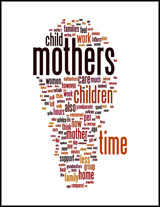2020 Vision: The Trust Fund Generation
Research commissioned by The Children's Mutual
Executive Summary
This report focuses on the future — the year 2020 and beyond when today’s babies and toddlers with Child Trust Funds will start to become 18 years old and have unfettered access to the cash that has been invested. Some will have only a little — the basic sums provided by the government plus the accrued growth. But some will have quite a lot — at least £30,000 if their mums and dads, grandparents or other kind souls have topped up the funds to the maximum allowed each year. They will be part of a unique generation in which the notion of saving has been inculcated from birth by the State and in which some at least will have the financial resources that were once the privilege of a very small elite.
What will this mean to them and how will it shape thei r lives? Will a new generation of 18-year-olds simply blow their funds on endless parties and the kinds of hedonistic pursuits that we traditionally associate with late adolescence in Britain? Or will this be a new generation of prudent capitalists — the money in the bank being a spur to new ways of thinking about the future and planning for the longer term? Will they use the funds to pay for higher education, avoiding the burden of debt that comes with student loans that often linger for a decade or more after leaving university? Will we witness a new generation of entrepreneurs with start-up businesses or e-commerce ventures bank-rolled by the newfound affluence that CTFs will bring in their transition from teenager towards adulthood?
These are important questions. They are also, like any that seek to predict the future, difficult questions. We cannot sensibly ask two and three year olds what they will do with their money in sixteen years time. Which of us ‘grown-ups’, even, could confidently answer that? We can, however, look at existing trends in what is known as ‘emerging adulthood’ and project these forward. How do today’s late teenagers, for example, differ from their parents in their attitudes towards money, their ambitions, insecurities, dependencies, lifestyle expectations and hopes for the future? In what ways might tomorrow’s teenagers differ from those of today — and what contribution might CTFs make to the distinctiveness of young adults in the second and third decades of the new Millennium. Each generation has a need to re-invent itself — to distance itself from that of its progenitors — and to endow itself with distinctive characteristics.
Each generation is also the unique product of the economic, social and cultural forces of its time. The Baby Boomers growing up as teenagers in the sixties were the beneficiaries of unprecedented economic growth and proceeded to make the most of it — through subscription to ‘hippy’ values of free love, rock and roll and anti-establishment sentiments. They could afford to do so — there would always be jobs, university education was free, there were student grants and the future was rosy.
The next generation was not so lucky. ‘Generation X’, born between the mid sixties and late seventies, arrived in a very different world — one of economic recession, disillusion and a deep resentment of the lingering cultural icons of the 1960s. They have been, perhaps very unfairly, dubbed the ‘lost’ and ‘selfish’ generation in which the pursuit of a ‘loads-amoney’ lifestyle characterised for those of previous generations an unwelcome and vulgar shift in what it meant to be British.
Definitions of today’s youngsters are less clear cut. In one sense they are at the tail end of ‘Generation Y’ — those born in between the early eighties and the current decade of the noughties. But they are quite special. The current generation of 18 year olds are those whose formative images as young adolescents were of 9/11, the London bombings and tsunamis. They grew up in what is sometimes described as the ‘post-politics’ age in which the radicalism of the Baby Boomers was finally laid to rest and the notion of ‘a job for life’ became extinct. They are also, of course, the Millennium and Internet generation, with unparalleled access to information and entertainment and, despite the events of their childhood, a cautiously optimistic view of the future.
From all of this, one thing is clear. Tomorrow’s Trust Fund generation will not be the same as today’s youth. It will have its own defining characteristics. The current trends, however, suggest that it will be altogether more ‘sensible’ than that of its grandparents and rather ‘nicer’ than that of its parents, adapting to the pressures that are currently being experienced by the children of the noughties and the economic and social forces that will continue to shape the lives of the generation to follow.
Click here to download and read the full document using Adobe's Acrobat Reader.






